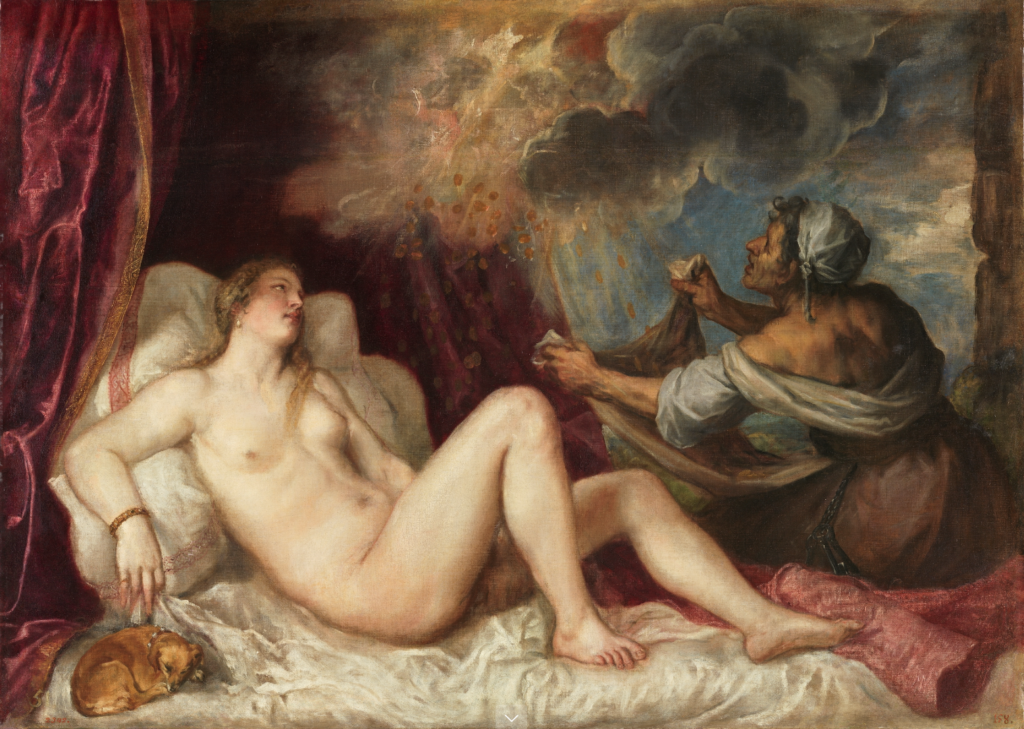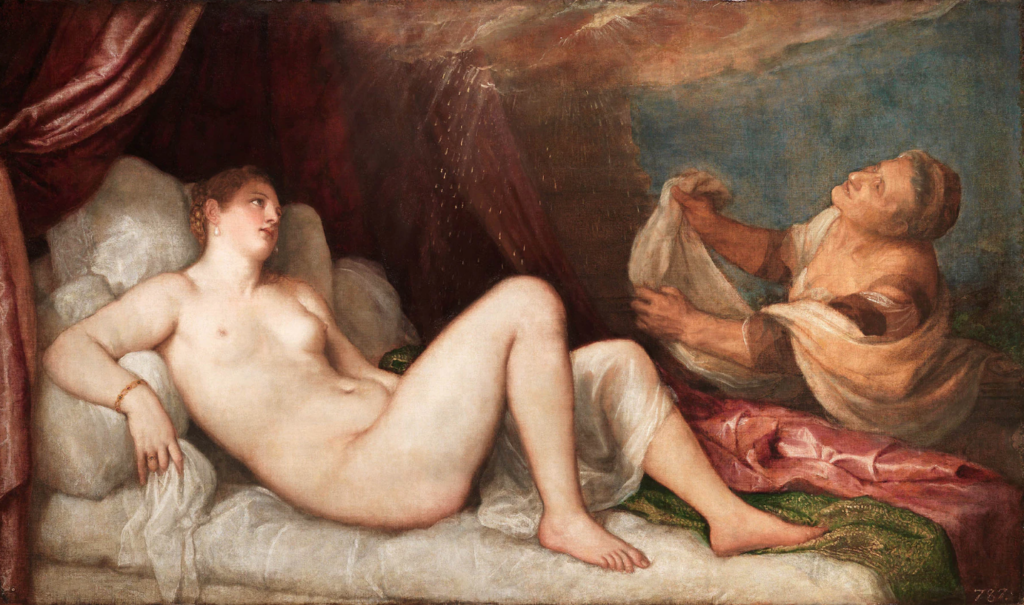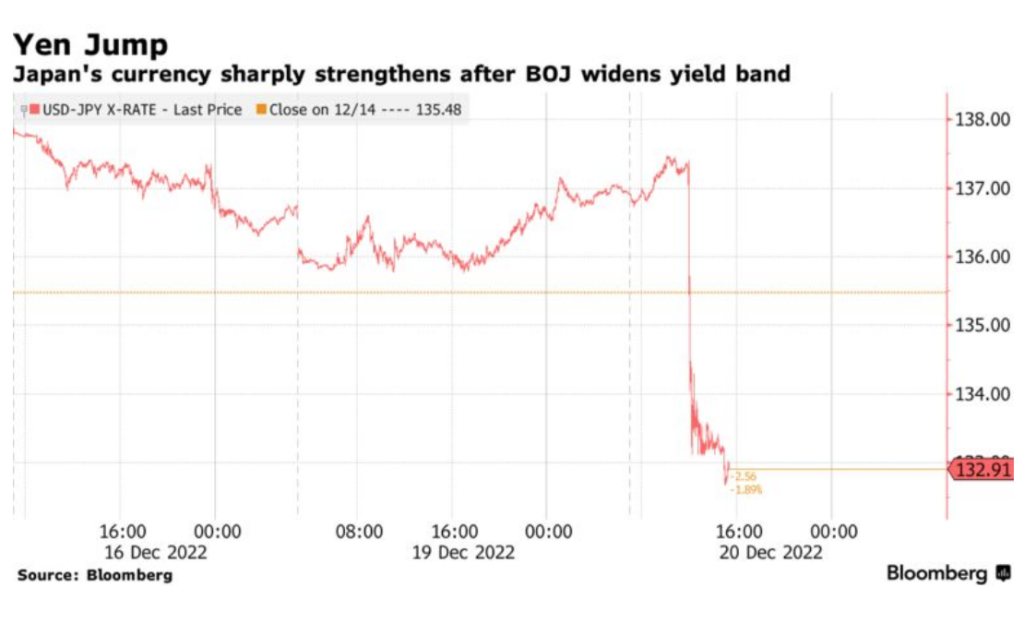Titian’s helicopter drop
Now that I’m retired, I’m playing around a bit with the layout of my blog. For the past 13 years, I’ve been annoyed that the narrow central column of text made it hard to read graphs, and made pictures smaller than I would like. But I didn’t know how to fix the issue and was too busy to research the subject.
A few weeks ago, I had a tech guy widen the central column and add an attractive old dollar bill on top. More recently, I experimented with a new banner on top using a screenshot from a famous old painting by Titian, which shows a “helicopter drop” of gold coins onto the Greek princess Danaë. I’ll say a bit more about the painting below, but first a few comments on helicopter drops, which are widely misunderstood.
In order to be a helicopter drop in the traditional sense of the term, the new money being injected must be zero interest base money, and it must be given away rather than sold. Thus the creation of interest bearing reserves doesn’t count, as most “QE” programs merely exchange one interest bearing government liability for another. A true helicopter drop involves showering the public with new zero interest currency notes.
A combined fiscal–monetary expansion can have the effect of a helicopter drop even if the new cash is not given away. Thus, assume the government sends a $1000 check to each citizen, financed with interest-bearing debt. At the same time, all of that new debt is purchased with new currency. Although the new cash is not literally given away in this case, the combined effect of this fiscal/monetary action is the same as simply giving each citizen $1000 in cash.
Again, this doesn’t apply to real world QE programs combined with fiscal stimulus, such as the various Covid relief bills. Those mostly involved new debt being purchased with interest bearing reserves. However, a small portion of the QE did constitute a helicopter drop, as currency held by the public also increased somewhat during Covid.
In most cases, currency injections merely accommodate changes in the public’s real demand for cash. When this occurs, inflation stays near the 2% target. But during 2021-2022, prices rose about 8% above target, and the extra currency demand associated with that higher price level is a true “monetization of the debt”, in the classic sense of the term. In this case, we are talking about roughly $200 billion in “helicopter drop” money over the past few years.
Economists often assume that helicopter drops are a foolproof method of stimulus. But if the public is rational then the expansionary effects are no greater than for an ordinary open market purchase of bonds, without any accompanying fiscal stimulus. When the Fed buys bonds with a permanent increase in the currency stock (an open market operation), the public’s future expected tax liabilities fall by an equal amount. In a world of 3% interest rates, a gift of $1,000 is worth exactly as much as a permanent reduction of taxes by $30/year.
PS. Titian is perhaps my fourth favorite painter, and probably my favorite among what I’d call the non-miraculous artists. Here is the Prado version of Danaë, from which the new header is taken:

This link shows a better image.
While the one in the Prado is probably the best version, there are at least 6 others, with the prettiest being the one in the Wellington Collection:

This link shows the Wellington version before its recent restoration. The difference is stunning. (Unfortunately, the top portion is lost.)
PPS. There’s a certain type of person that I find very annoying. They’ll make claims about whether or not economics is a science, as if the statement told us something useful about the world. These intellectual mediocrities are the sorts of people that engage in tiresome debates about whether something is “art or pornography”. For them, words have a sort of mystical power.
Titian’s paintings of Danaë are clearly pornographic, and were intended to be pornographic when he painted them. (Discerning viewers will notice that the Prado version is more pornographic than the Wellington version.) So the only sensible way of responding to the “art or pornography” question is, “Why not both”? Because these works of pornography were intended for the elites, a more polite term is generally employed, say “erotica”.
To conservatives, the term “stimulus” has a negative connotation, suggesting a search for immediate gratification without any thought of future consequences. Both monetary stimulus and sexual promiscuity are “irresponsible”.
PPPS. Justin E.H. Smith had this to say about artists that were bad people:
Lest you conclude in light of what I have said so far that I must be a “bad” person, a “garbage human being” as they love to say on Twitter, perhaps this is the moment to assure you that, if I could, I would not hesitate to call Child Protection Services on these monsters I have admitted to valuing as artists. . . .
But it is annoying to have to provide these assurances, as to do so implies acceptance of the general frame in which art, and its relationship to morality, are understood in our society. This frame, whether its upholders know it or not, shares with socialist realism, and with earlier nineteenth-century nationalist attitudes towards arts and literature, the presumption that to value a work of art must at the same time be to wish to give the person who made it a medal, when he still lives, or to build him a statue when he dies, or to name a prize after him or even a university.
And concludes:
So he’s problematic? Jerry Lee [Lewis] could have told you that himself. In fact he has been doing so, in his art, on stage, in the public eye, before the world, presumably before his God, for the past seventy years.
PPPPS. For me, the miraculous painters are Velázquez, Vermeer, and Cézanne. The ones where you can’t figure out how they did it.





